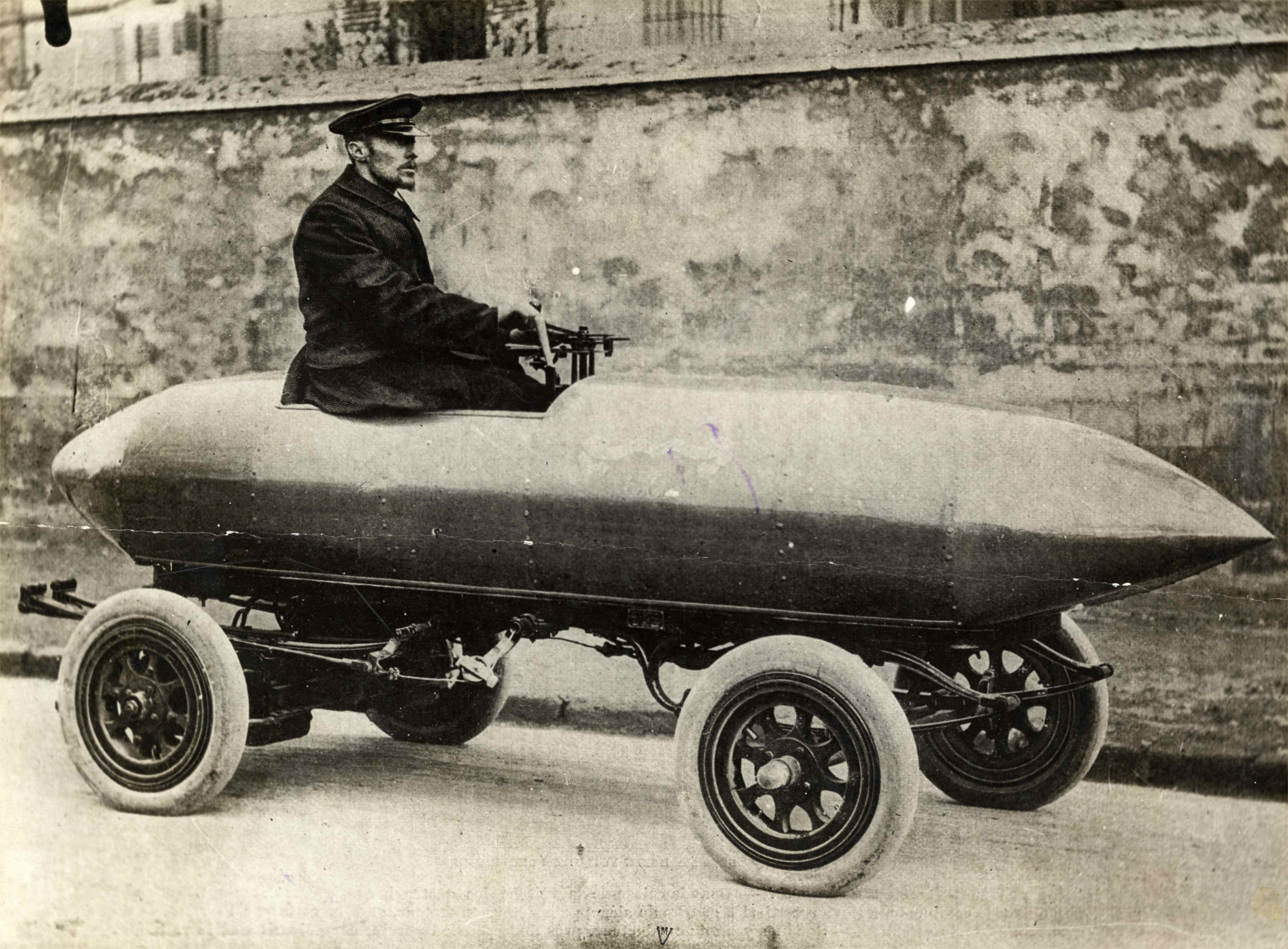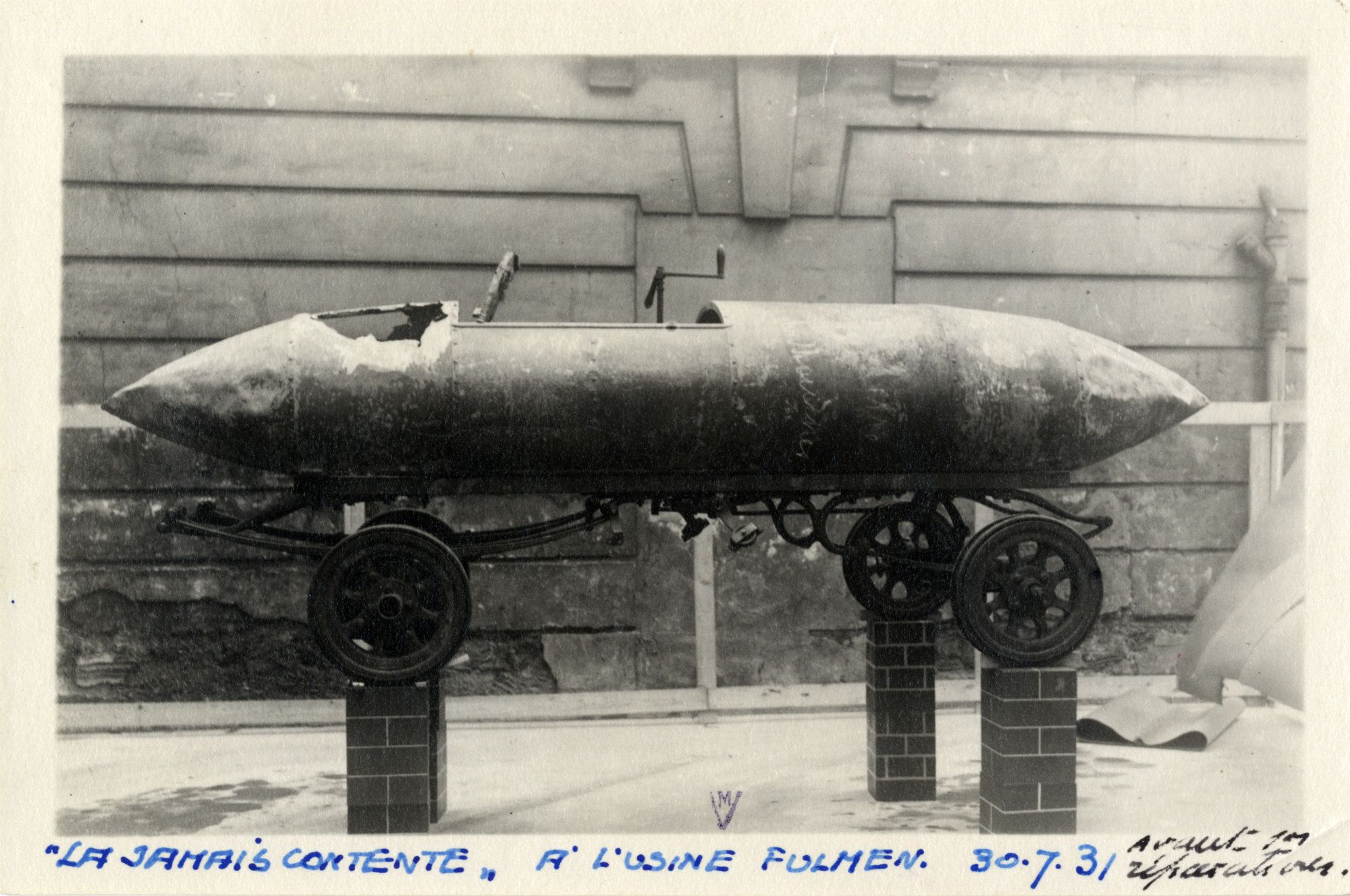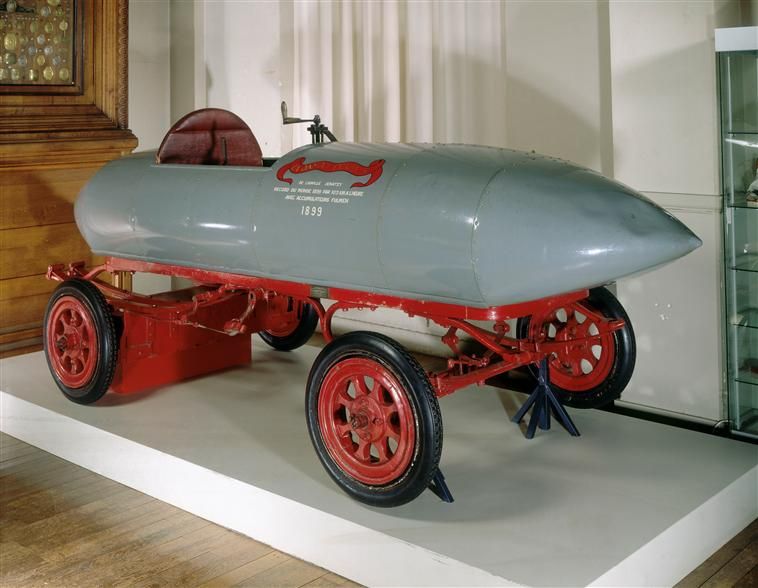Did You Know That The Fastest Car In The World 122 Years Ago Was Electric?
Images: Courtesy Musées et domaines nationaux des châteaux de Compiègne et de Blérancourt
Born in 1868, Camille Jenatzy was a Belgian engineer and racing driver who rapidly built up a reputation for being a real daredevil during the very early years of the automobile. Nicknamed the Red Devil, he took part in several races, winning the Gordon Bennett Cup in 1903, in a Mercedes.

The son of a manufacturer of rubber parts and objects, including tyres, Jenatzy was interested in automobiles at an early age. In 1899, Jenatzy designed La Jamais Contente (never satisfied!) for a competition to determine whether mechanical propulsion could exceed animal propulsion.

La Jamais Contente was powered by two electric motors on the rear axle. The aerodynamic shape, in the form of a bullet, was crafted in an aluminium alloy called ‘partinium’.

As the designer and driver, Jenatzy broke the speed record: La Jamais Contente reached 105.85km/h (65.25mph) on 29 April 1899, in Achères, in France, after a fierce fight with another electric car built by Frenchman Charles Jeantaud.

Unsurprisingly, the car acquired legendary status and was an exhibit at the Retrospective Exhibition section of the 1907 Paris Motor Show. An image from the exhibition shows La Jamais Contente with its original white tyres. Whether the electric motors were still present in the car at that point of time has been a matter of speculation, as they went missing subsequently.

On 8 December 1913, Camille Jenatzy was the victim of a hunting accident and died soon after from his injuries; his untimely death was big news then, with reports appearing in international newspapers such as The New York Times.

In the late 1920s, a gentleman named Fulmen acquired La Jamais Contente. Stored without much care, the acid gases emanating from the accumulators rotted away the bodywork. Fulmen restored the car, with the restoration completed by 1931. It was then used for advertising purposes and was driven around Paris.
The steering system was changed at some point, retaining the tiller-style concept as seen in early automobiles.

In April 1933, La Jamais Contente became part of the Musée national de la voiture et du tourisme (National Museum of Cars and Tourism) collection at the Château de Compiègne, some 90km east of Paris.

In 1933, a replica was made by the students from l'Université de technologie de Compiègne et des apprentis du Lycée technique Mireille Grenet (the Mireille Grenet technical high school).

Since the 1930s, La Jamais Contente has been preserved at the Musée national de la voiture (National Museum of the Automobile) in Compiègne. For several years it was on display in the hugely impressive kitchen of the museum.

It was also exhibited at the Rétromobile show in Paris, in February 2019, where it was a huge success. During the first quarter of 2020, La Jamais Contente was part of a stunning exhibition on concept cars at the Musée national de la voiture et du tourisme.

La Jamais Contente remains a very important part of automotive history, emphasising the significance of EVs (electric vehicles) since the dawn of the automobile era.


Comments
Sign in or become a deRivaz & Ives member to join the conversation.
Just enter your email below to get a log in link.

